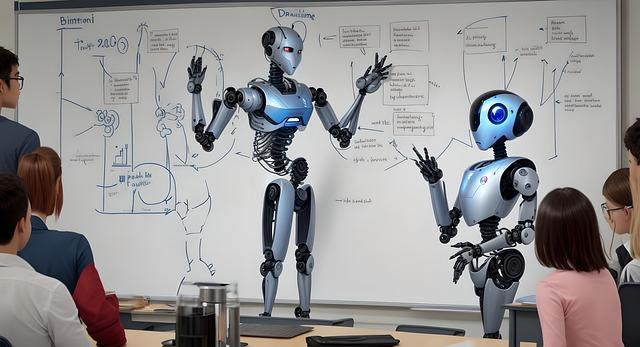Once solely the stuff of science fiction, artificial intelligence (AI) has surpassed the boundaries of imagination and become an integral part of our day-to-day lives. Its invisible tendrils—it might surprise you—are interwoven more intricately into the fabric of our existence than flares from the farthest galaxies. We are living in the age of Siri, of Alexa and Google Home, a time where chatbots have become commonplace. Today, we knock on the door of another exciting frontier – education. With our focus pivoted to learning, humanity embarks on yet another splendid journey with AI as our companion. This provokes an important question: how exactly is this fusion of binary and brain poised to transform the world of learning? Buckle up, fellow explorers, as we navigate the fascinating labyrinth of AI in education and discover its transformative possibilities.
In recent times, as we enter a new era of digital learning, Artificial Intelligence (AI) has emerged to play a pivotal role in the modern education sector. A far cry from the traditional ‘chalk and talk’ approach, AI is enhancing teaching methods with personalized learning plans, real-time feedback, and interactive lessons. The advent of AI brings an innovative touch to tackling educational challenges, offering a more tailored, efficient and interactive learning environment.
Diving deeper into AI Pedagogy, sophisticated virtual tutors and intelligent instructional design systems can decipher complex student data to curate learning programs best suited for individual needs. It can also identify gaps in learning, providing students with the necessary feedback to enhance their understanding. For teachers, AI can automate tasks like grading, thereby making room for more one-on-one instruction. Here’s a brief overview:
| Feature | Benefit |
|---|---|
| Personalized Learning Plans | Facilitates targeted learning experience tailored to individual student requirements. |
| AI Tutors | Provides unparalleled 24/7 academic support, ensuring students’ queries are addressed promptly. |
| Automated Grading | Frees up teachers’ time, allowing them to focus more on individual student engagement and instruction. |
To integrate AI into the future learning environment, education systems should prioritize:
- Training programs for educators to leverage AI technology effectively in classroom teaching.
- Improved infrastructure to support advanced AI systems.
- Data protection measures to ensure the confidentiality and security of students’ information.
Indeed, AI brings an exciting dimension to education, promising endless possibilities to make teaching and learning not just tech-equipped but also fun.
As we step boldly into the vast expanse of this technological age, the fusion of AI and education may well be likened to the concept of infinity — mysterious yet promising, indefinable yet vast. Standing at the threshold of an educational revolution, where advanced algorithms become our tutors and classrooms transcend physical boundaries, we venture into uncharted territories of boundless potential. While the machinations of AI continue to reconfigure the landscape of learning, it’s the power of curious minds and impassioned hearts that will truly harness the potential of these digital maestros. The future of education may be artificial, but the intelligence, resourcefulness, and resilience of human insight remain profoundly real. Thus, as we meld silicon intellect with our organic wisdom, let us remember to direct the course of this transformation with as much empathy as intellect, ensuring a future where education is not just intelligent and personalized, but also, deeply human. For it is in this balance, we’ll find the evolution of learning that truly matters.















